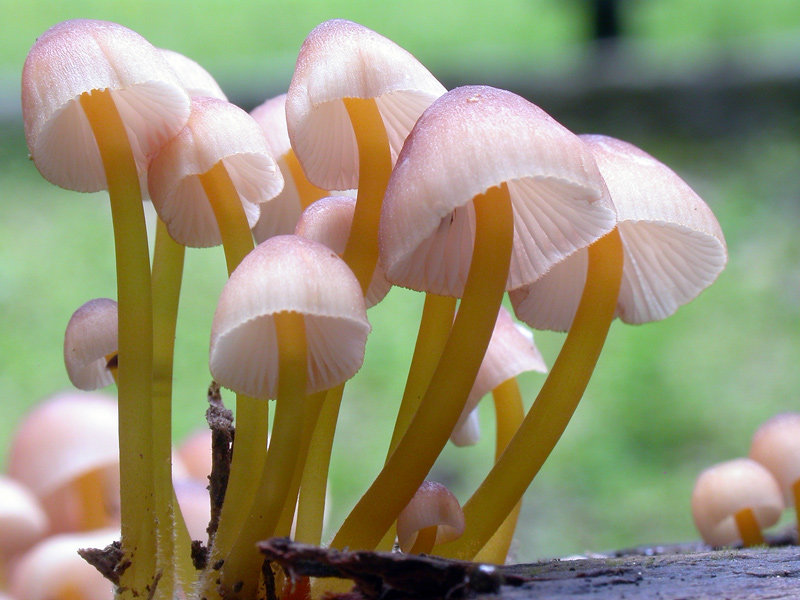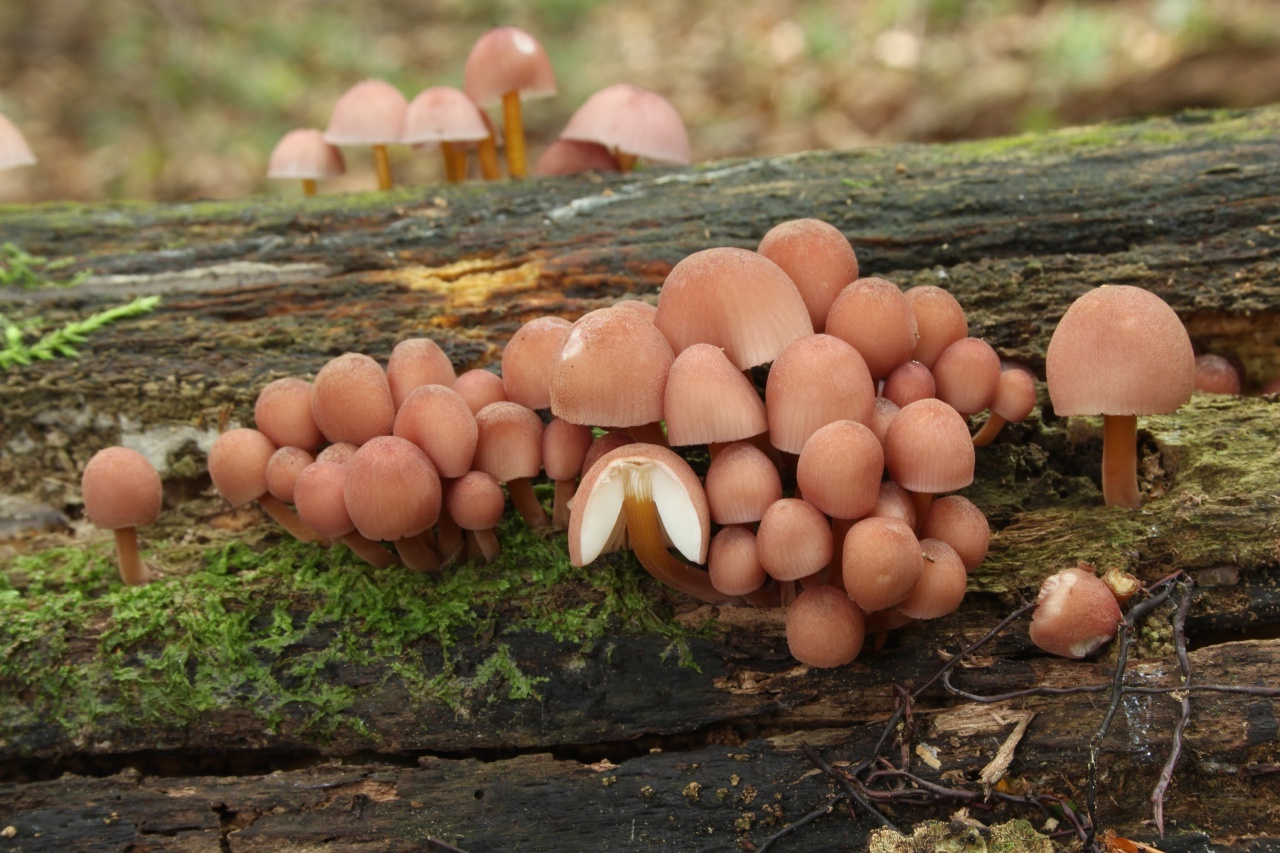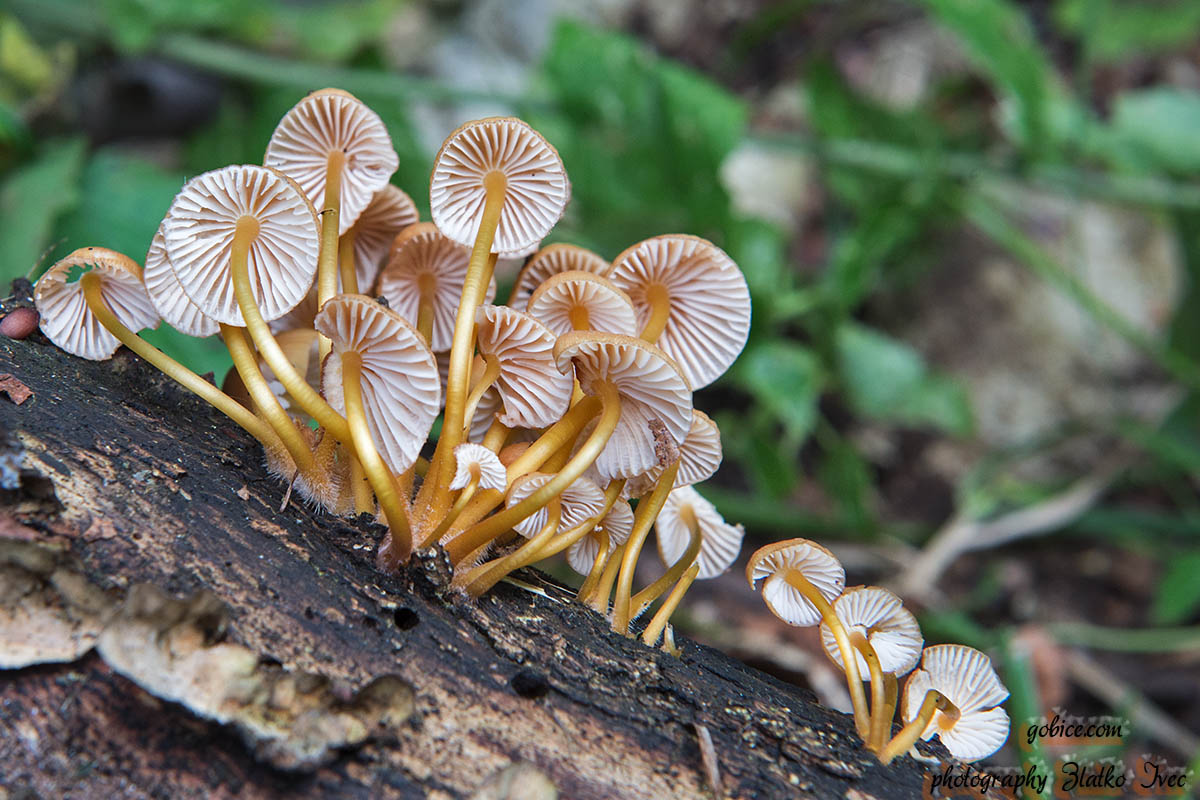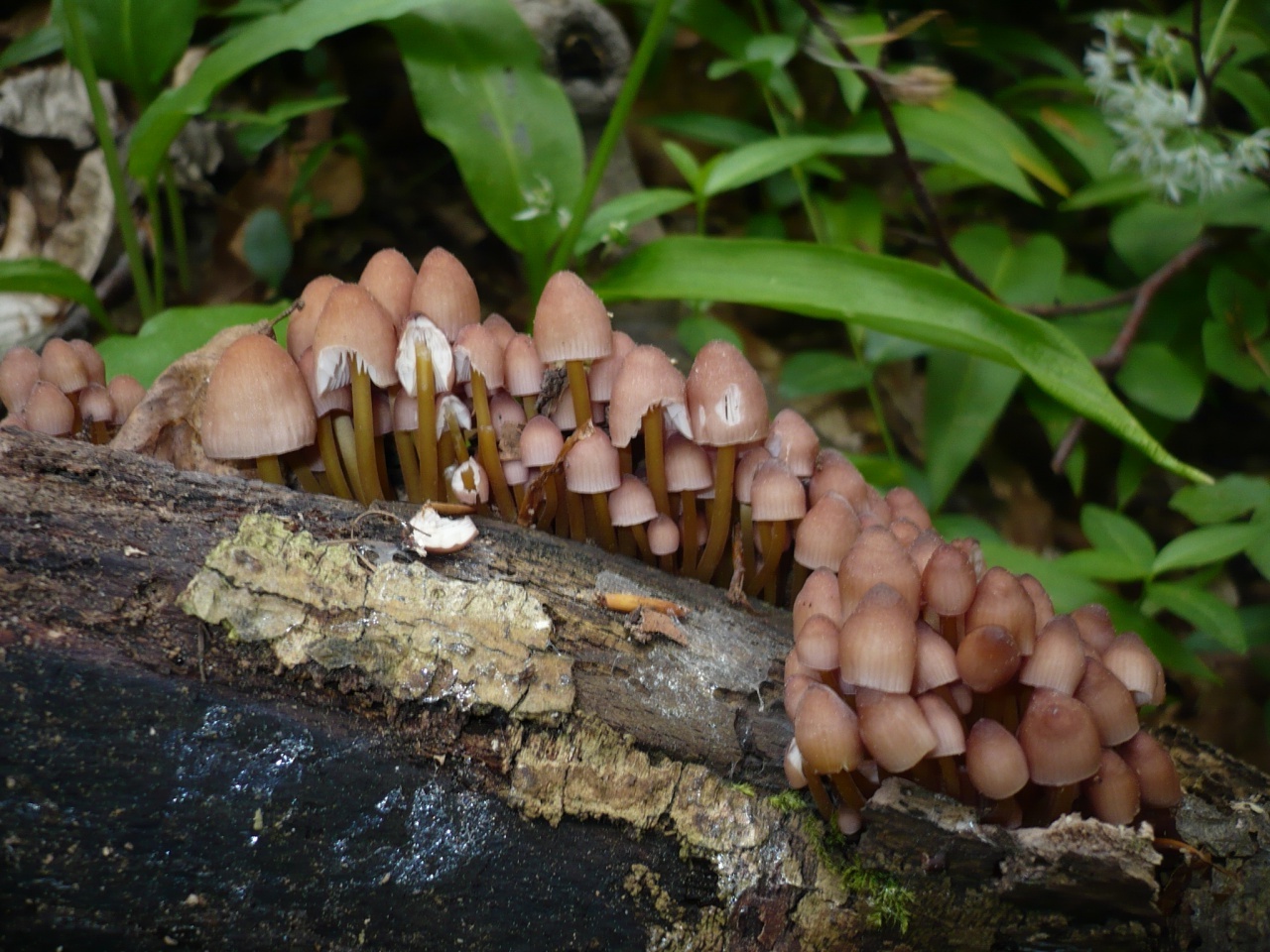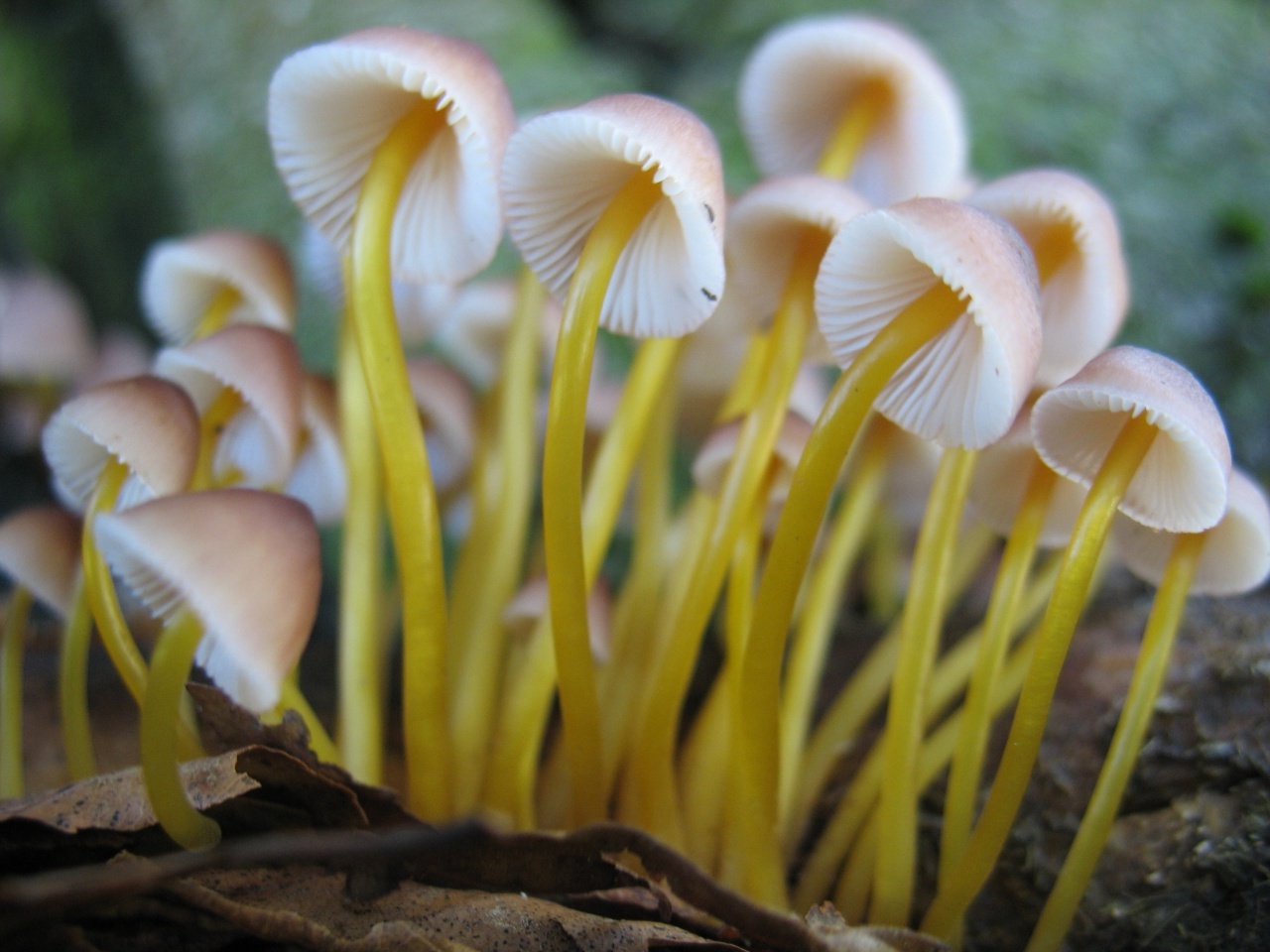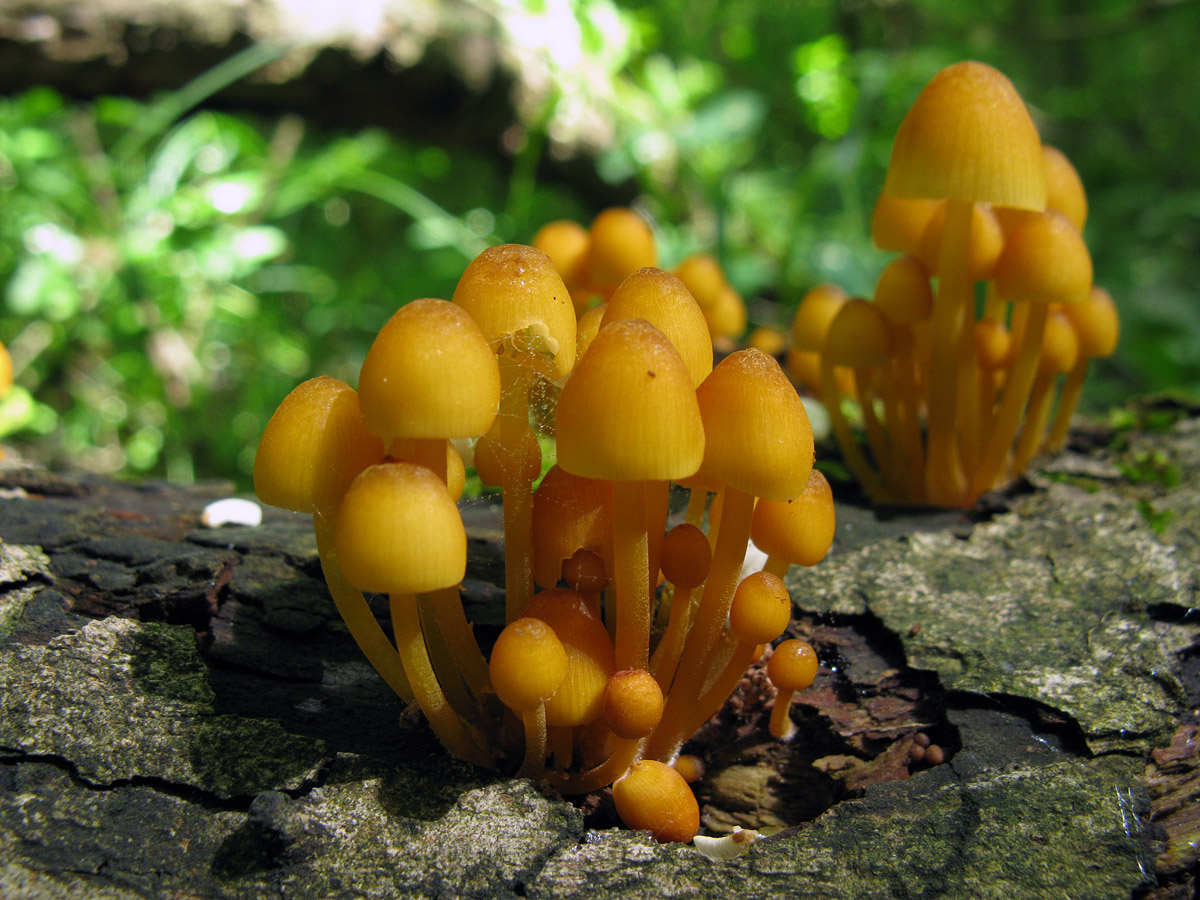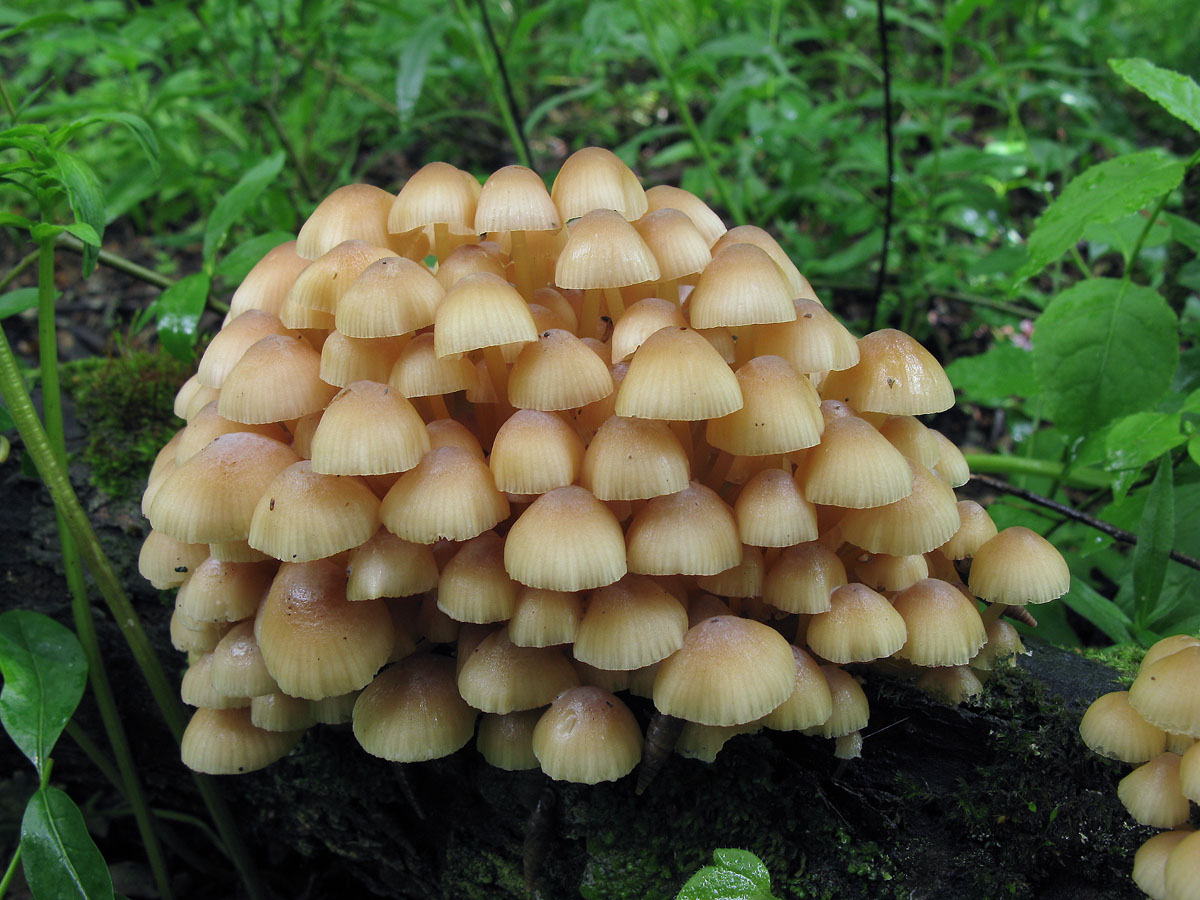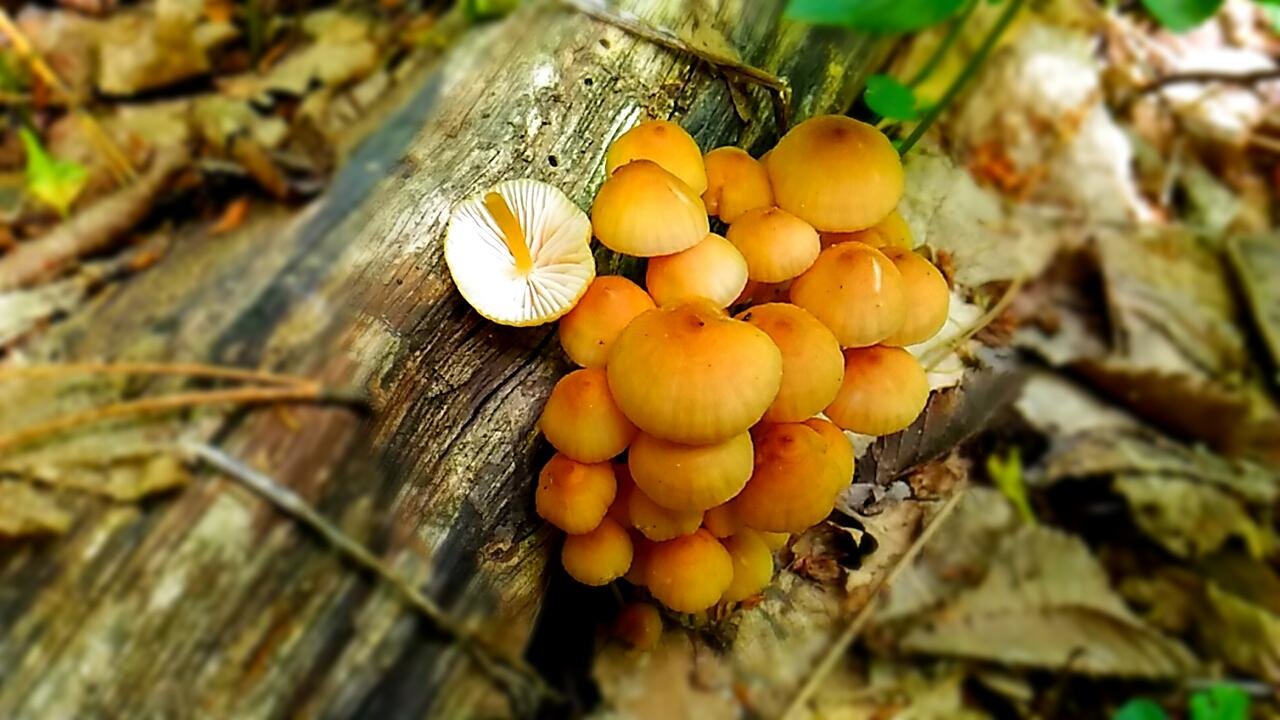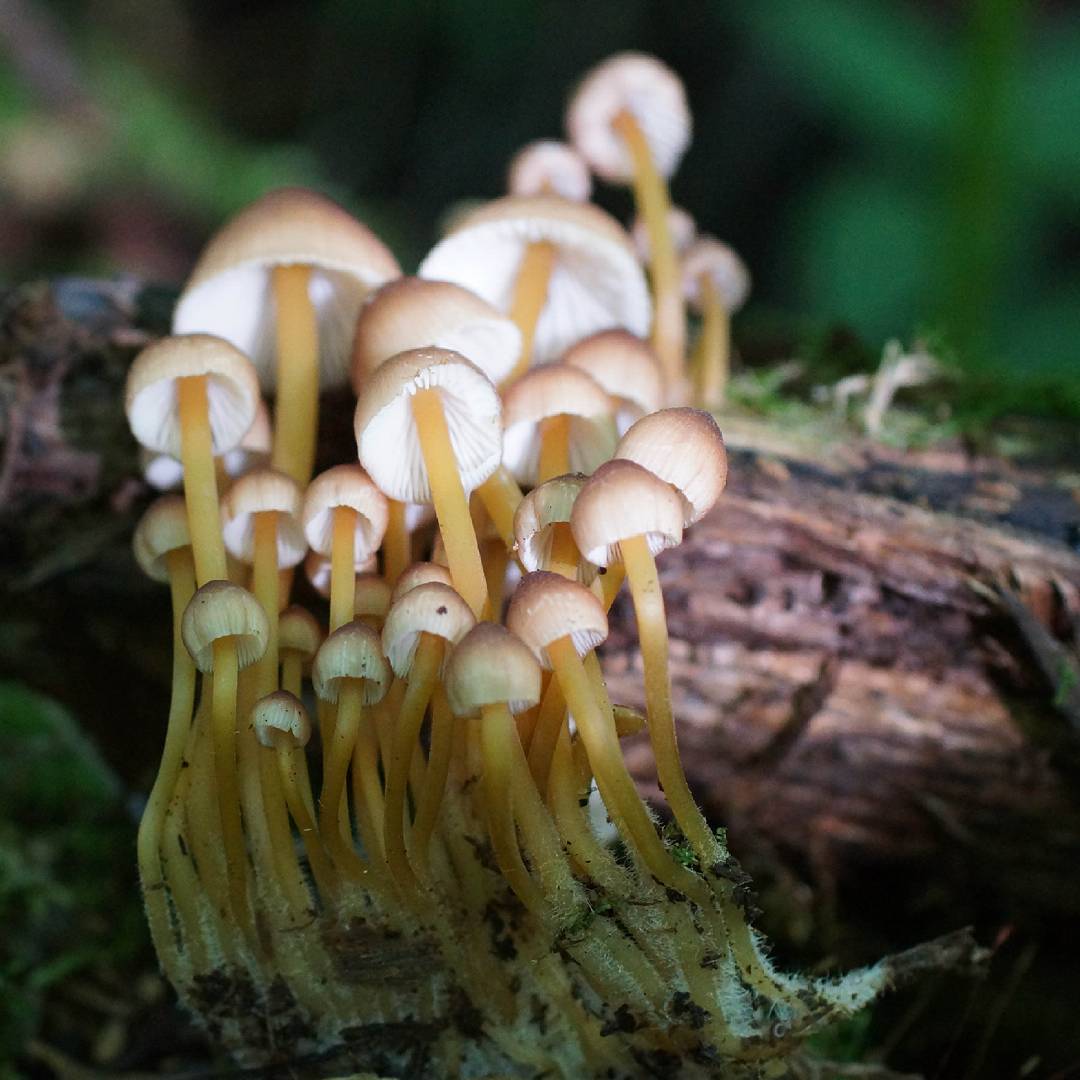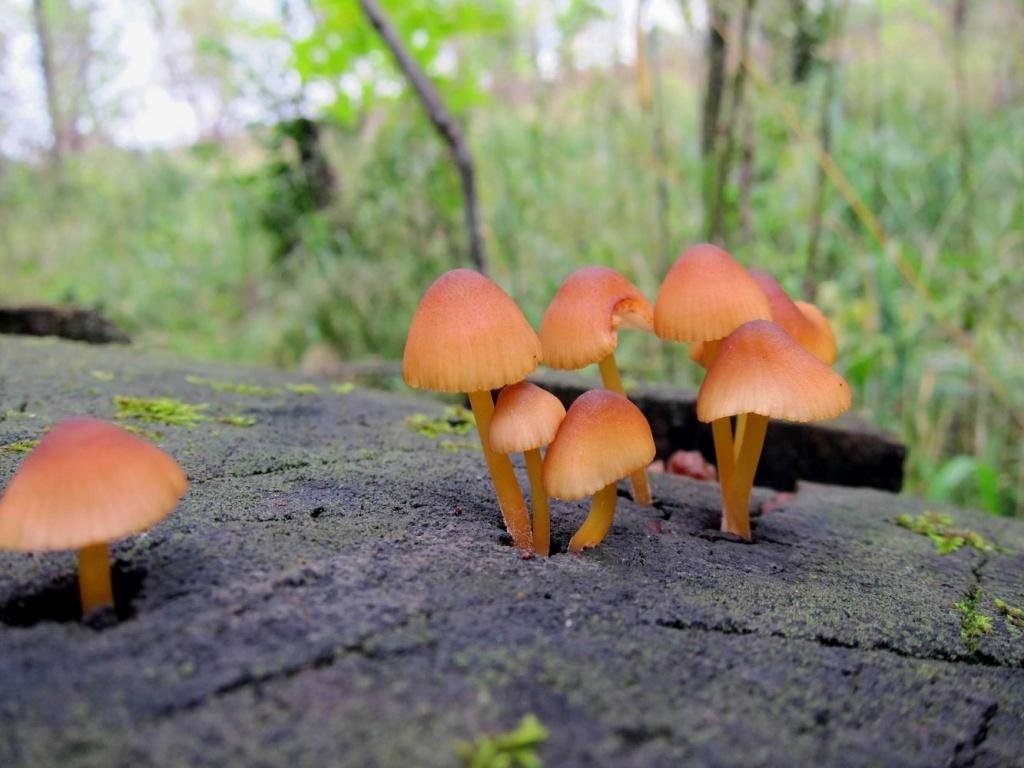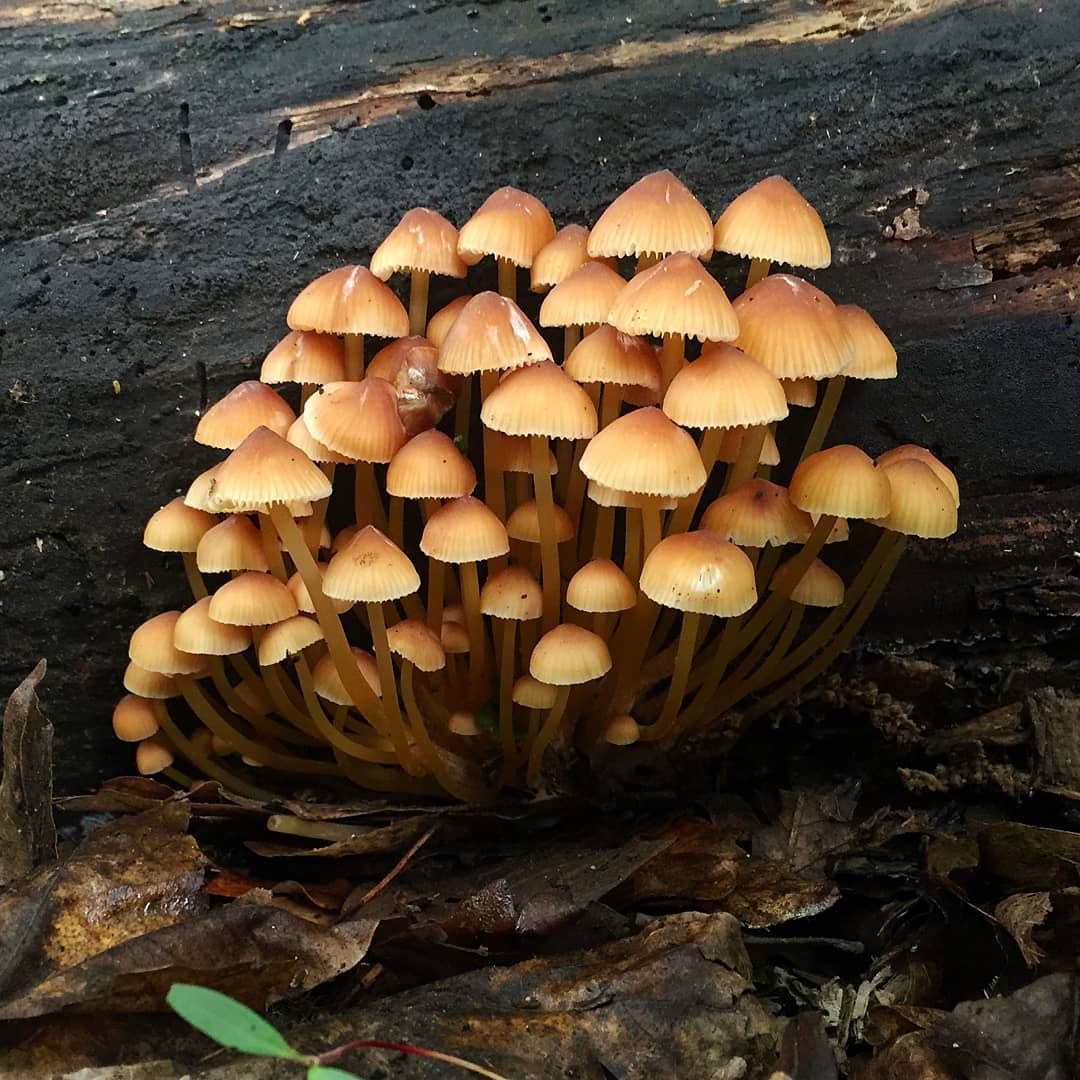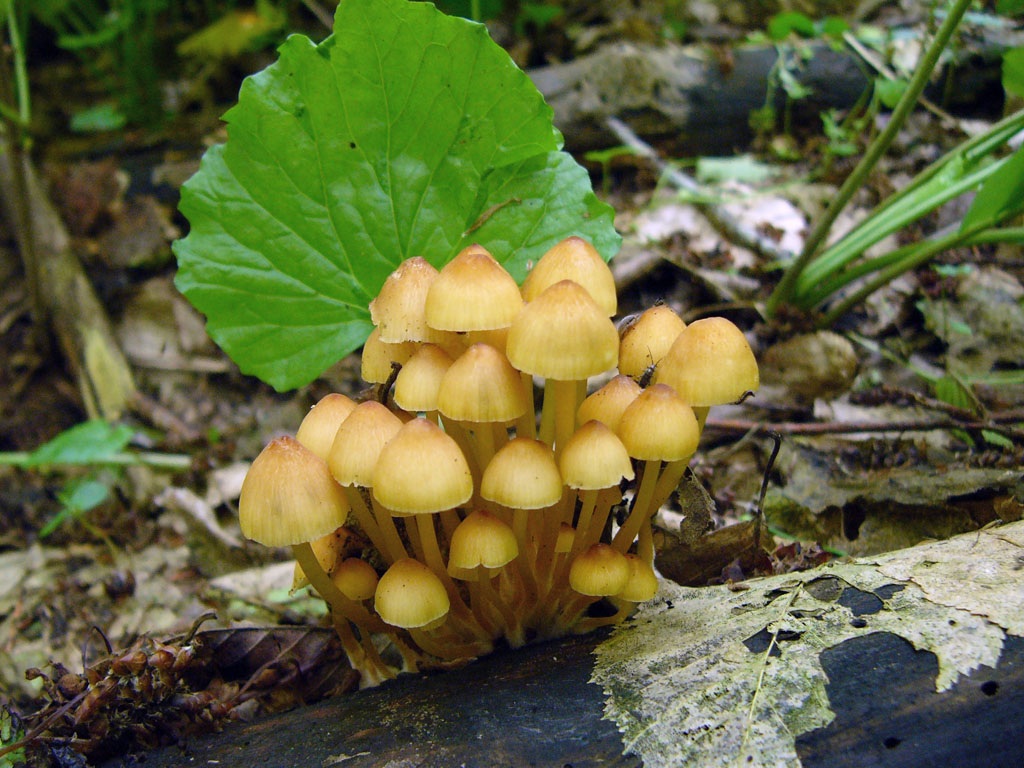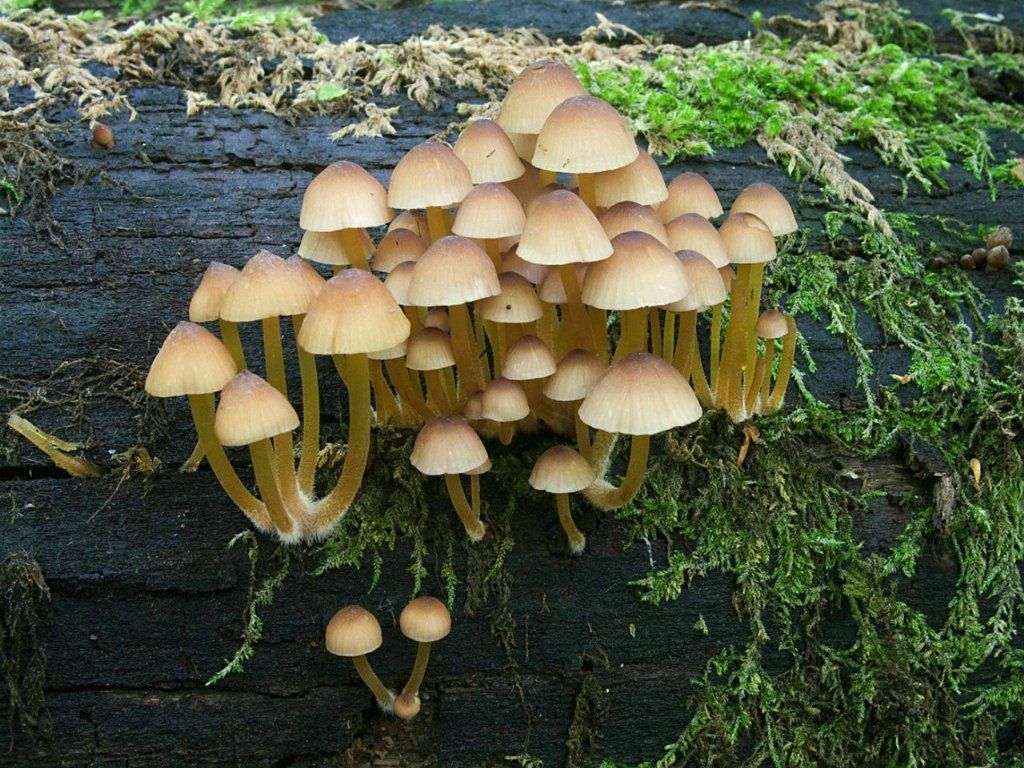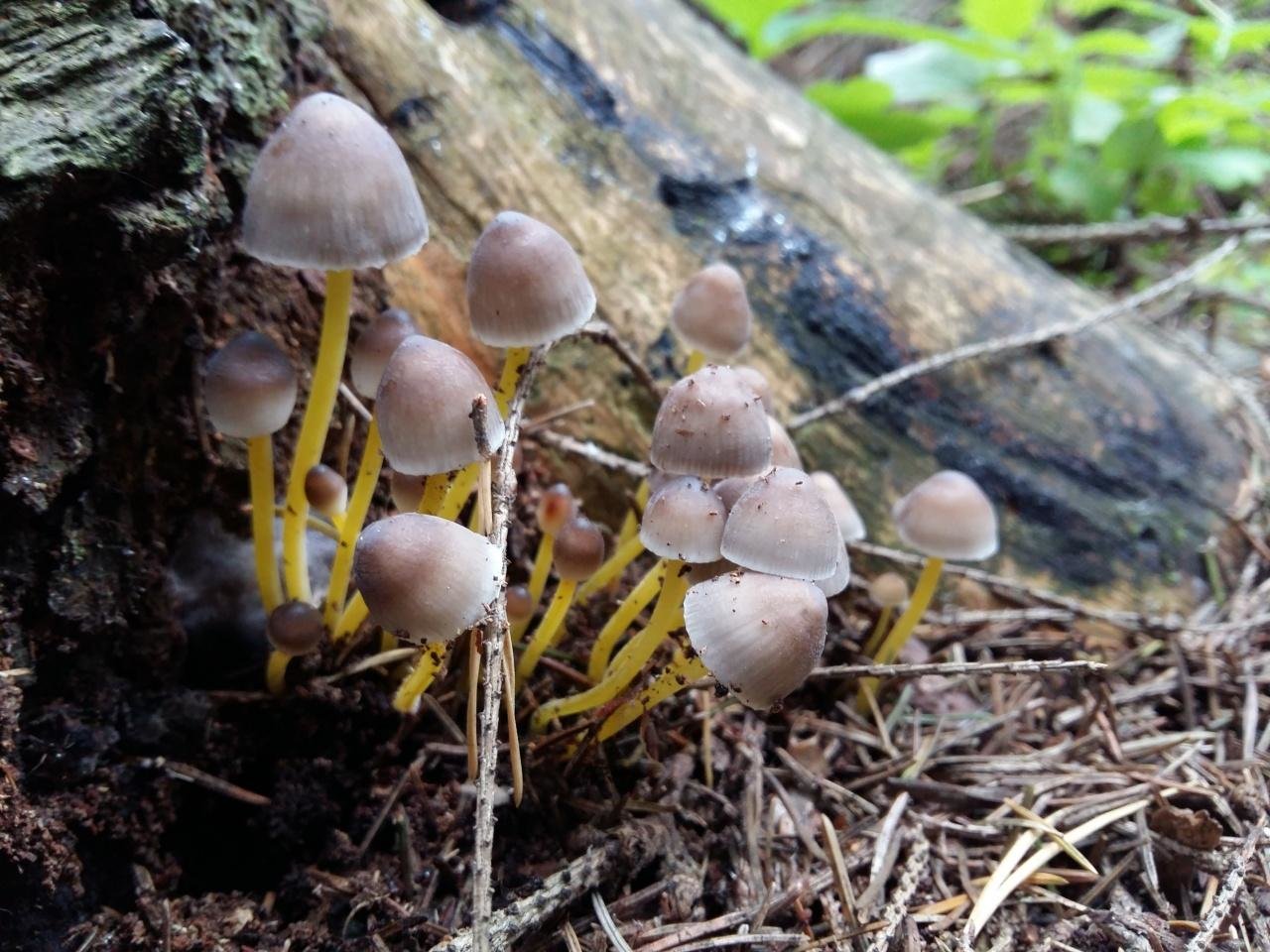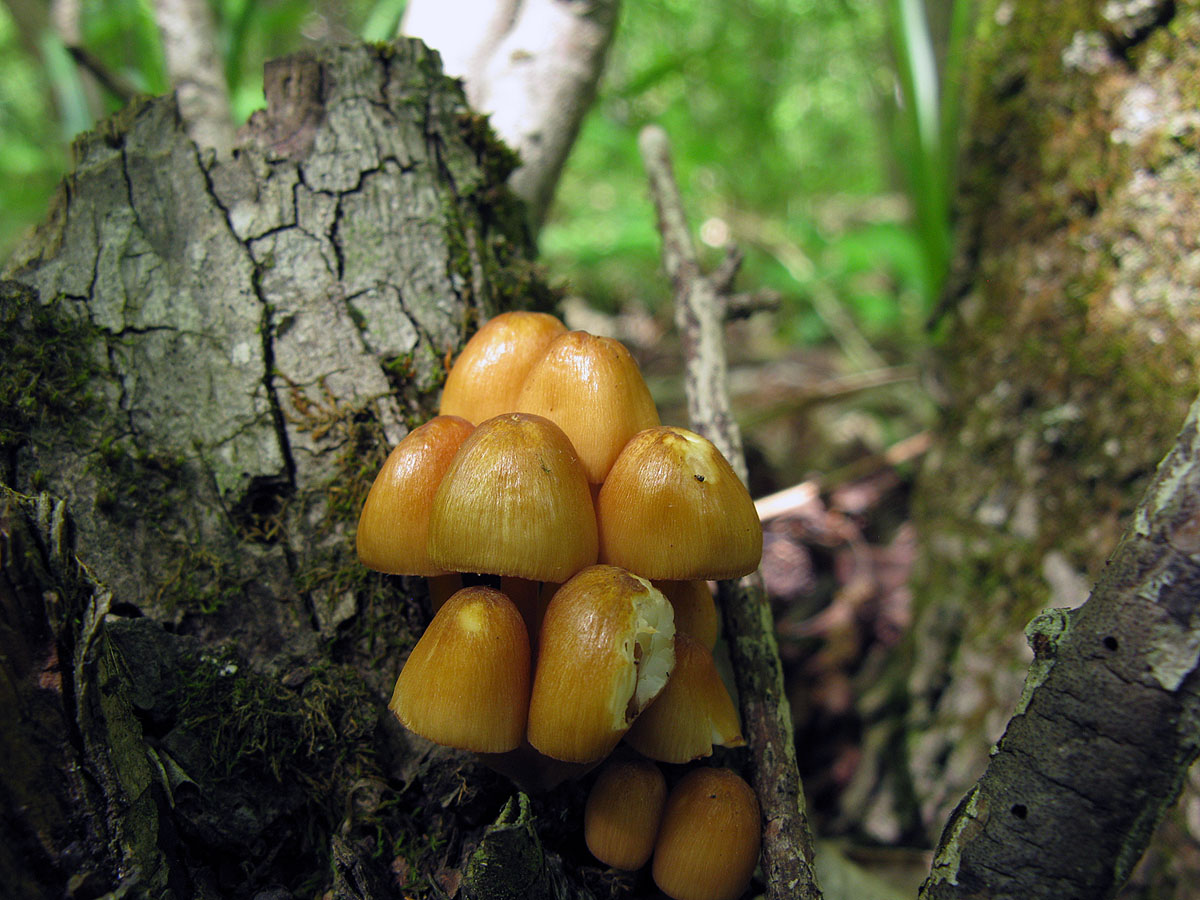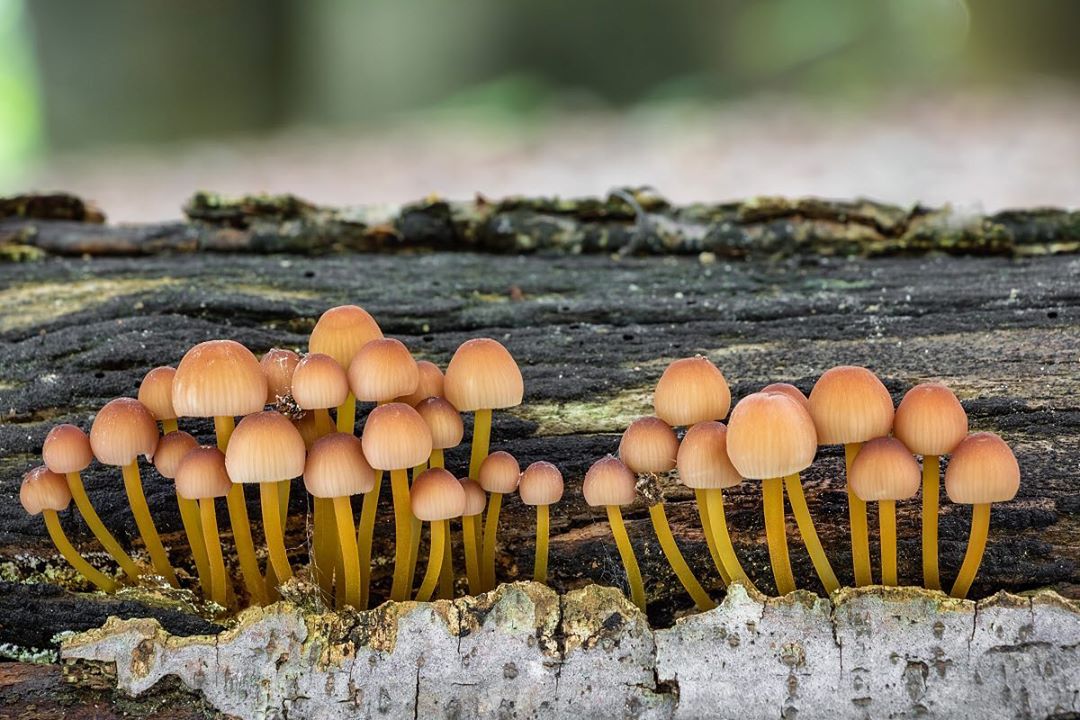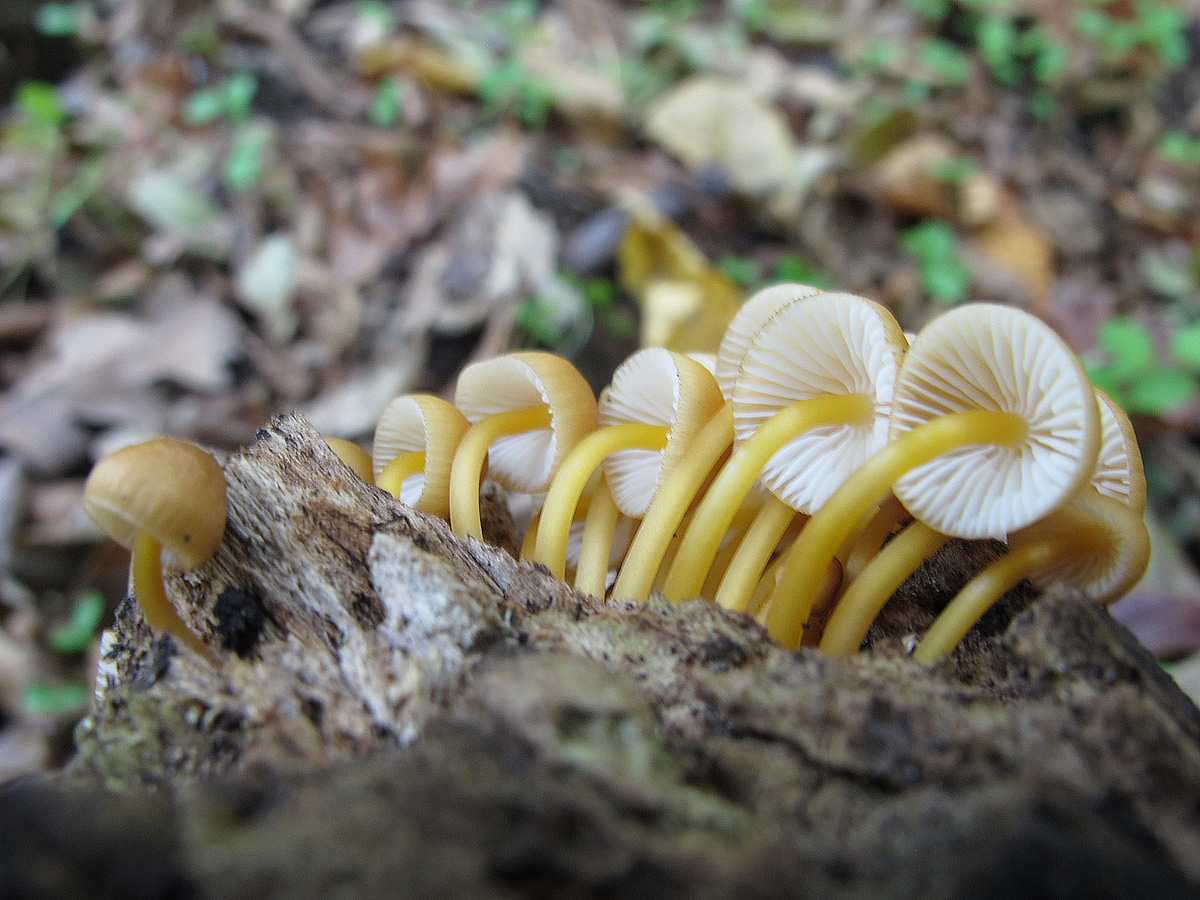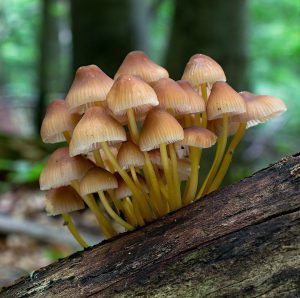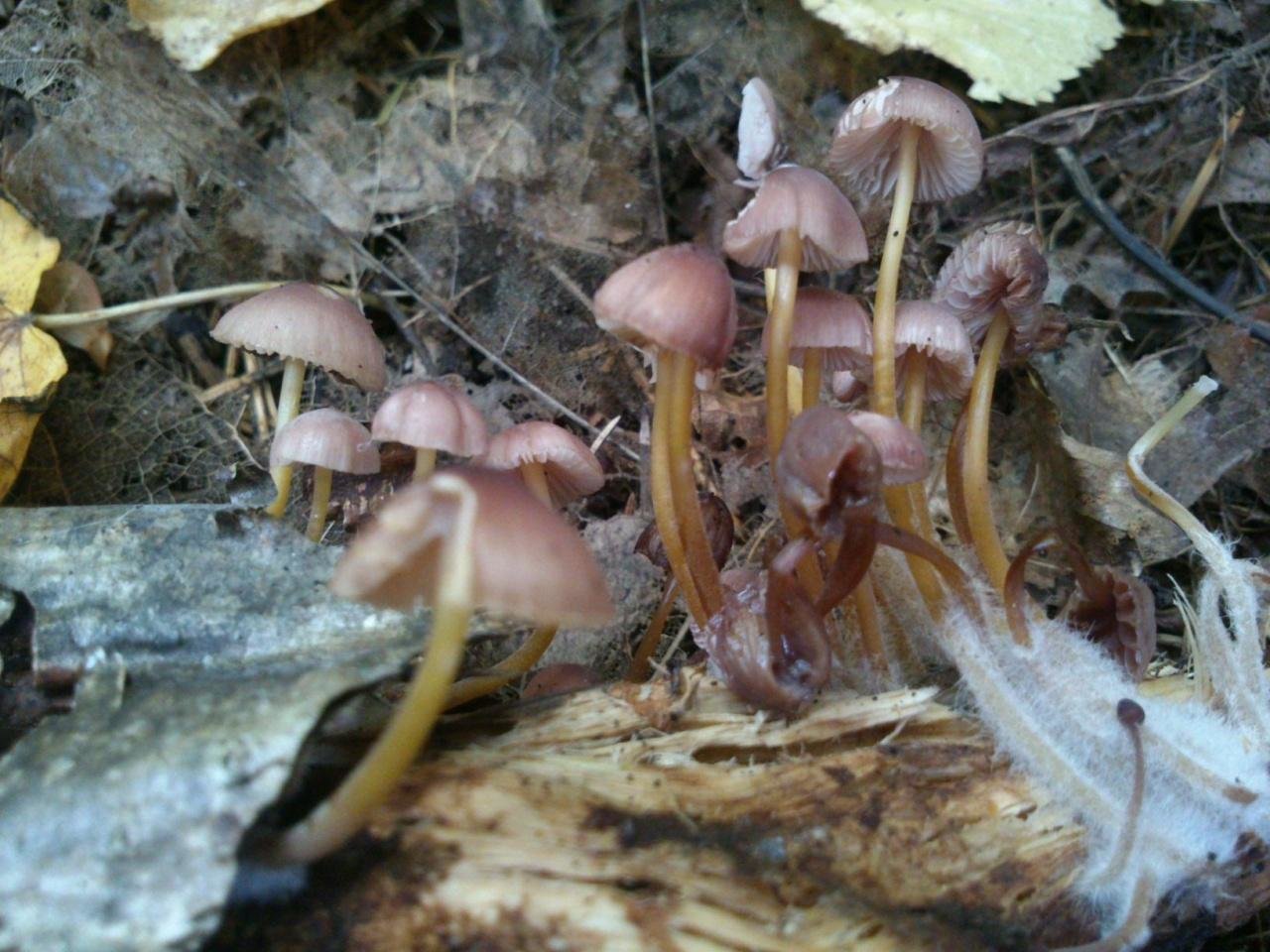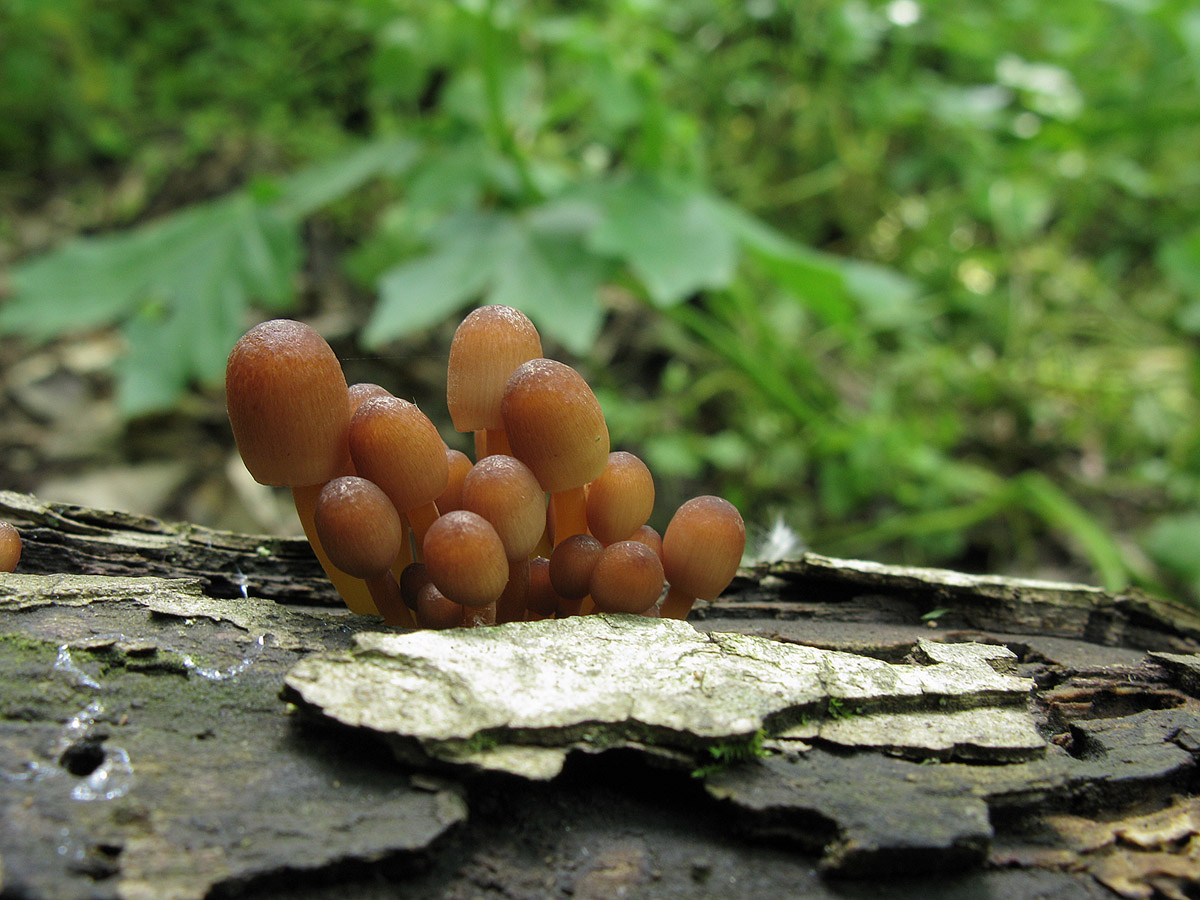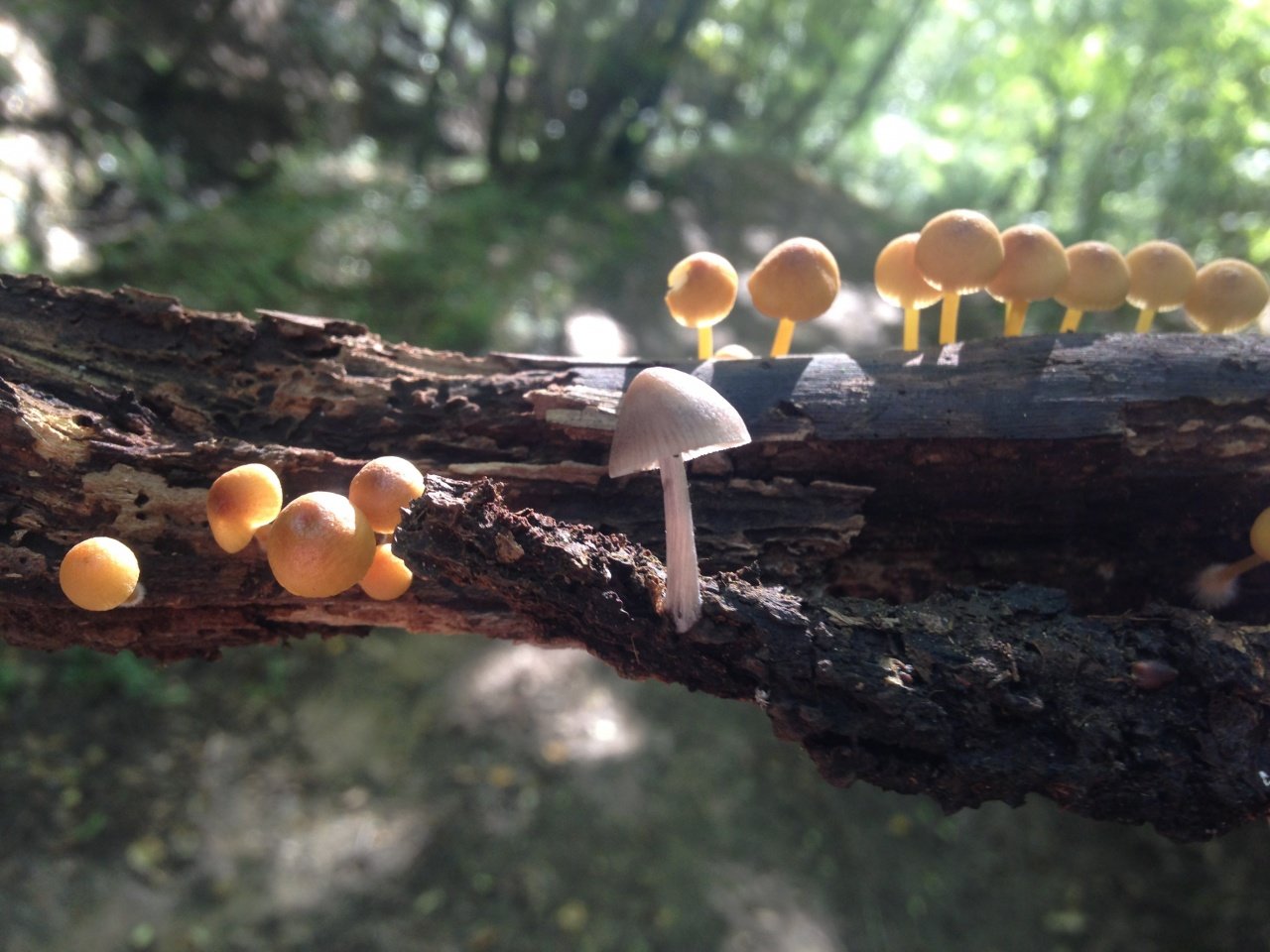Mycena inclinata
or
Mycenae motley
Inclined mycena (Mycena inclinata) is a fungus of the Mycene family, from the Mycene genus, is characterized as a reducent. Widely distributed in the European continent, Australia, Asia, North Africa, North America. The inclined mycene species also includes two special subspecies that were discovered and described in Borneo. The synonym is mycena variegated.
External description of the mushroom
The flesh of the inclined mycena is fragile, white and very thin, has no smell at all, but some mushrooms still have a barely noticeable unpleasant aroma.
The hymenophore of this type of fungus is represented by a lamellar type, and the plates in it are not too often, but not rare. They grow to the peduncle with teeth, have a light, sometimes grayish or pinkish color, cream shade.
The diameter of the cap of this type of mushroom is 2-4 cm, its shape initially resembles an egg, then it becomes blunt-annular. At the edges, the cap is lighter, uneven and chopped, gradually becomes convex-outstretched, with a noticeable tubercle in its central part. Sometimes in mature mushrooms, a dimple is visible at the top, and the edges of the cap become curved and covered with wrinkles. Color - from brown-gray to pale brown, sometimes turns into fawn. The tubercle in a mature inclined mycene often turns brown.
Habitat and fruiting period
The inclined mycena (Mycena inclinata) grows mainly in groups, choosing for its development the trunks of fallen trees, old rotten stumps. Especially often you can see this type of mushroom near oak trees in the forest. The most active fruiting of the inclined mycena falls on the period from June to October, and you can see this type of fungus in mixed and deciduous forests. The fruit bodies of the inclined mycena prefer to grow on deciduous tree species (oak, rarely birch). Fruiting annually, they are found in groups and whole colonies.
Edibility
Mycena inclinata is characterized as an inedible mushroom. In some sources, it is considered conditionally edible. In any case, it is not toxic.
Similar species, distinctive features from them
Research has allowed to prove a high level of genetic similarity of mycene inclined with such types of mycene as:
- Mycena crocata;
- Mycena aurantiomarginata;
- Mycena leaiana.
The outwardly inclined mycene is very similar to Mycena maculata and the bell-shaped mycene.
Remarks
For the first time, the description of the inclined mycene was made in 1838. A Swedish mycologist named Elias Fries named the new mushroom species Agaricus inclinatus. Inclined mycene received its current name in 1872, in the scientific works of another mycologist, whose name was Lucien Kele. Agaricus galericulatus calopus, described by the same Fries in 1873, and Mycena galericulata calopus, used in the scientific works of Peter Carsten in 1879, are also synonyms for the name of the represented species of mushrooms.

